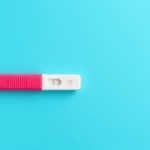Understanding Implantation Bleeding vs Period
In this discussion, we will focus on the differences and similarities between implantation bleeding and a regular period. Recognizing these distinctions can provide valuable insights for individuals concerning their menstrual health and potential pregnancy.
Implantation bleeding occurs when a fertilized egg adheres to the uterine lining, resulting in slight spotting that is often mistaken for a menstrual period. This process typically takes place 6 to 12 days after conception. In contrast, a regular menstrual period marks the shedding of the uterine lining when pregnancy does not occur, usually occurring every 28 days or so. The two experiences can sometimes feel similar but vary in timing, duration, and characteristics. Understanding these differences is crucial for those trying to conceive and for managing health effectively.
What is Implantation Bleeding?
Implantation bleeding is a light spotting that some women experience when a fertilized egg implants itself into the uterus. This usually happens about a week after conception. Because this timing aligns closely with the expected onset of a woman’s menstrual cycle, it can often lead to confusion.
The spotting is usually light pink or brown rather than the more common bright red associated with menstrual bleeding. The duration is typically short, lasting only a few hours to a couple of days. It is essential to note that not all women experience implantation bleeding, and its presence can be a sign of early pregnancy.
Understanding its characteristics can help women identify whether they might be pregnant or if they are about to have their period. Tracking symptoms and patterns can significantly aid in distinguishing between the two events.
In conclusion, while implantation bleeding and menstrual periods can share some similarities, their differences in timing, color, and duration can help identify what a woman is experiencing. Awareness of these factors can be quite beneficial for reproductive health.
Characteristics of Menstrual Bleeding
Menstrual bleeding is the monthly discharge of blood from the uterus that occurs as a part of the female reproductive cycle. This process is regulated by hormonal changes in the body. A typical period can last three to seven days, with the flow often increasing and decreasing in intensity throughout.
During a menstrual cycle, the uterine lining thickens in preparation for a possible pregnancy. When fertilization does not occur, hormonal levels drop, leading to the shedding of this lining. Menstrual blood can vary in color from bright red to dark brown and often contains more tissue than what is seen with implantation bleeding.
The flow during a period tends to be heavier during the first two days, then gradually lightens. Many women experience symptoms such as cramping, bloating, and mood swings, which can differ significantly from the light spotting typically noted during implantation bleeding.
Overall, understanding menstrual characteristics is essential for managing one’s reproductive health and recognizing any irregularities that may occur.
Timing Differences: When Do They Occur?
Timing is one of the most significant differences between implantation bleeding and a menstrual period. A typical menstrual cycle lasts around 28 days, although this can vary from woman to woman. Ovulation usually occurs midway through the cycle, leading to potential conception.
If fertilization does happen, implantation typically occurs 6 to 12 days later. This means that implantation bleeding can often occur just days before a woman would expect her period, creating the confusion many experience. If a woman is tracking her cycle, understanding this timeline can help clarify whether she is dealing with implantation bleeding or the start of her period.
For those trying to conceive, being aware of this timing is crucial. It allows for proper planning, tracking ovulation, and understanding cycles can enhance the chances of conception. Prior awareness can also help in understanding early pregnancy signs.
In summary, timing variations between implantation bleeding and menstrual periods are essential indicators in identifying one’s reproductive state.
Color Variations: What’s Normal?
The color of vaginal bleeding can serve as another distinguishing factor between implantation bleeding and a menstrual period. Implantation bleeding tends to be lighter in color, usually appearing pinkish or brown rather than the vibrant red typically associated with menstrual flow.
During a period, blood often starts as bright red, signifying fresh bleeding, which may darken as the flow becomes heavier and more established. As the period progresses, it may become dark brown or even black. This change in color is due to the age of the blood; lighter blood signifies that it is fresh, while darker shades indicate older blood.
Being aware of these color variations can assist women in recognizing what they might be experiencing, allowing for better management of symptoms and seeking medical advice if necessary.
Recognizing these color differences is crucial for maintaining reproductive health and ensuring any irregularities are addressed promptly.
Length of Bleeding: Spotting vs. Flow
The duration of bleeding is another key difference between implantation bleeding and menstrual bleeding. Implantation bleeding is often very brief, lasting only a few hours to a couple of days. In contrast, a menstrual period usually lasts three to seven days, with varying flow intensity.
Women can expect menstrual bleeding to follow its own typical pattern, often intensifying for the first few days and gradually tapering off. In comparison, the spotting experienced during implantation is short-lived and often does not require the use of menstrual products.
Understanding the length of bleeding can significantly aid women in differentiating between their menstrual cycles and potential pregnancy signs. Tracking these patterns can also offer insights into one’s reproductive health overall.
In summary, length differences between implantation bleeding and menstrual periods can provide vital information regarding women’s reproductive health.
Accompanying Symptoms: What’s Normal?
Alongside bleeding, various symptoms may accompany either implantation bleeding or menstrual periods. During a menstrual period, women frequently experience a range of symptoms, including cramps, headaches, and mood swings due to hormonal fluctuations.
Conversely, pregnancy-related symptoms can appear around the time of implantation. These may include mild cramping, breast tenderness, or fatigue, though they tend to be less intense than menstrual symptoms. Changes in appetite and potential nausea may also surface as the body begins adjusting to pregnancy.
Being able to differentiate between these symptoms can greatly assist women in identifying their reproductive health status. Paying attention to one’s body and recognizing patterns can undoubtedly aid in managing overall well-being.
To summarize, understanding the accompanying symptoms helps women to timely grasp whether they are experiencing implantation bleeding or their menstrual period.
Testing for Pregnancy: When to Start?
One common question that arises when determining if bleeding is due to implantation or menstruation is when to take a pregnancy test. Most over-the-counter pregnancy tests become effective about a week after an expected period, which coincides with the time of implantation. Testing too early may lead to inconclusive results.
For the most accurate results, it is advisable to wait until the first day of the missed period to take a pregnancy test. This timeframe allows enough time for the hormone hCG, which indicates pregnancy, to build up in the system.
Women should also consider the sensitivity of the test they are using, as different brands have varying levels of accuracy. Educating oneself on these aspects can improve testing outcomes and assist women in understanding their reproductive state.
In a nutshell, understanding when to perform a pregnancy test is crucial for accuracy and can help women identify if they are pregnant following implantation bleeding or simply experiencing their menstrual period.
Final Thoughts
In conclusion, understanding the differences between implantation bleeding and menstrual periods is a significant aspect of women’s reproductive health. By recognizing the timing, color, length, and accompanying symptoms, women can gain insights into their bodies’ signals regarding pregnancy or menstruation.
Awareness surrounding the characteristics of each can help manage one’s health more effectively and foster better decision-making regarding when to seek medical advice or take a pregnancy test.
Being informed about the nuances of one’s menstrual cycle, as well as the signs of pregnancy, empowers women to make proactive choices about their reproductive health, effectively clearing up confusion associated with these phenomena.
Frequently Asked Questions
Implantation bleeding is relatively common, though not all women experience it. Approximately one-third of women report some type of spotting associated with implantation.
Yes, it can often be mistaken for a light period, primarily due to the similar timing. Awareness of the characteristics of each can help women differentiate the two.
Implantation bleeding usually lasts from a few hours up to two days. In contrast, a regular period typically lasts three to seven days.
The best time to take a pregnancy test is after a missed period, allowing for sufficient hCG hormone levels to develop for accurate detection.
If unsure about the type of bleeding or if symptoms persist, it is important to consult a healthcare professional for clarification and guidance.
Further Reading
What Type of Psychotherapy Is Best for Anxiety?







